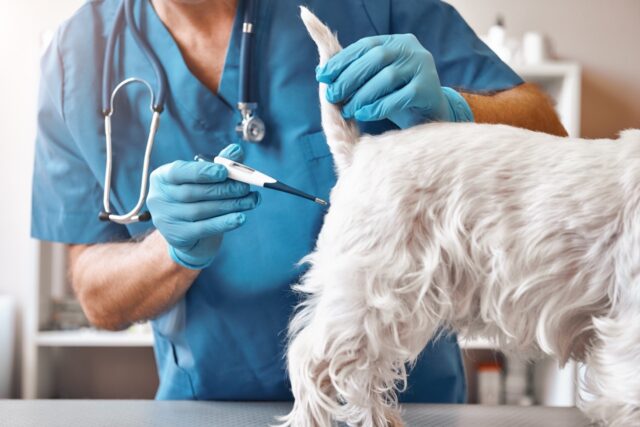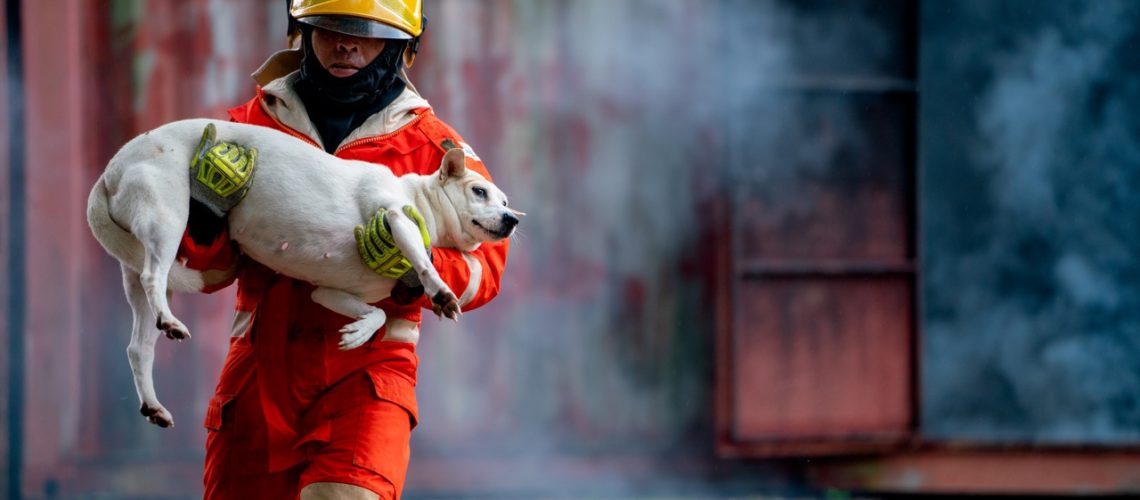Building a positive relationship with dogs can bring immense joy and companionship. However, it is compulsory to prioritize safety when interacting with these beloved animals. Understanding safe interactions with dogs helps you to prevent dog-related accidents and ensure the well-being of humans and canines. This article will explore important safety measures to consider when interacting with dogs, especially for individuals sourcing legal assistance for dog bite injuries in Phoenix, Arizona.
Educating about Dog Behavior:
Dogs primarily communicate through their body language, and being able to recognize their signals helps you interpret their emotions and intentions. Understanding canine behavior cues and body language can help prevent potentially dangerous situations by identifying signs of fear, anxiety, or aggression. It allows you to adjust your behavior or remove the dog from stressful situations. When you can interpret and respond appropriately to a dog’s signals builds trust and strengthens the human-dog bond. Recognizing discomfort can alleviate the dog’s stress, creating a more positive and relaxed environment. Here are some canine behavior cues and indications of discomfort.
Communication Signals:
Dogs use a variety of body language cues to communicate their emotions, intentions, and needs. Some common communication signals include:
Tail position and wagging:
A wagging tail can indicate different emotions depending on its position and speed. A relaxed, loose wag usually signifies a friendly or happy dog, while a tucked tail or stiff wag may indicate fear or anxiety.
Body posture:
Dogs convey confidence, submission, fear, or aggression through body posture. An upright and confident posture with a raised head generally indicates confidence, while a lowered head and crouched body may suggest fear or submissiveness.
Facial expressions:
Pay attention to a dog’s facial expressions, such as relaxed or tense eyes, relaxed or tense mouth, and ears held forward or pinned back. These cues can provide insights into their emotional state.
Indications of Discomfort:
Recognizing signs of discomfort is crucial to ensure the well-being of dogs and prevent potentially dangerous situations. Some common indications of discomfort include:
Lip licking or yawning:
Dogs excessively lick their lips or yawn when stressed, anxious, or trying to diffuse tension.
Panting or excessive drooling:
Panting can indicate heat but also be a sign of stress or discomfort. Excessive drooling is a symptom of anxiety or fear.
Avoidance or hiding:
Dogs may try to avoid or hide from situations or stimuli that make them uncomfortable or anxious.
Freezing or stiffening:
When a dog freezes or becomes stiff, it can indicate fear, discomfort, or readiness to defend themselves if they feel threatened.

Teaching Children Dog Safety
Children often have an innate curiosity and desire to interact with dogs, but teaching them how to do so safely is also compulsory. Educating children on appropriate behavior around dogs prevent accidents and promotes a harmonious relationship. Teaching guidelines such as approaching dogs calmly, respecting their boundaries, and avoiding rough play help in safe interactions between children and dogs.
Fortunately, numerous online resources can help parents and caregivers educate children about how to interact with dogs. The “SAFE Dog Bite Prevention Program” is a fun and engaging way for students to stay safe around dogs they know and those they don’t know. The program aims to prevent dog bites through education. This program offers free downloadable activities designed for families to teach dog safety to children. It helps prevent accidents and fosters a harmonious relationship between children and dogs.
Responsible Dog Ownership:
Responsible dog ownership plays a significant role in promoting safety. Proper training and socialization are essential to help dogs become well-behaved members of society. Additionally, meeting their physical and emotional needs is necessary for their well-being. Responsible owners can help prevent behavioral issues that may lead to unsafe interactions by addressing their exercise, nutrition, and veterinary care requirements.
Here are some dog training centers in Arizona specifically for dog owners to learn dog behaviors:
Arizona Humane Society:
The Arizona Humane Society provides dog training classes for dog owners. Their programs cover basic obedience, leash walking, and addressing common behavior problems. The classes are led by experienced trainers who use positive reinforcement techniques to help owners effectively communicate with their dogs.
Dog Training Elite Phoenix:
Dog Training Elite Phoenix offers training programs for dogs and their owners. They provide personalized training sessions where owners can learn how to communicate with their dogs and address behavioral issues. Their trainers focus on teaching dog owners effective techniques and strategies for training and managing their dogs.
Oh My Dog!:
Oh My Dog! is a training and behavior center in Phoenix that offers various training programs for dog owners. They provide classes and private sessions to help owners understand and train their dogs using positive reinforcement. They offer programs for basic obedience, manners, and behavior modification.
The Canine Connection:
The Canine Connection provides dog training services for both dogs and their owners. They offer classes and private lessons to help owners effectively communicate with their dogs, address behavioral issues, and strengthen the bond. Their training methods focus on positive reinforcement and reward-based techniques.
Sit Means Sit Dog Training:
Sit Means Sit is a national dog training franchise with several locations in Arizona, including Phoenix. They offer training programs for dogs and their owners, including classes, private lessons, and board and train programs. Their trainers work with owners to improve communication, obedience, and behavior management.
These dog training centers allow owners to learn effective training techniques, understand their dogs’ behavior, and develop a positive and harmonious relationship with their pets.
Safety Precautions for Interacting with Dogs
It is important to approach unfamiliar dogs cautiously to ensure their safe interaction. Always seek permission from the owner before engaging with a dog, and allow the dog to approach you first if they are comfortable. Avoid sudden movements or direct eye contact, as these actions may be perceived as threatening. Avoiding risky situations, such as disturbing a dog eating, sleeping, or caring for puppies, is also wise. When encountering an aggressive dog, maintaining a safe distance and not provoking or challenging them is crucial.
Dealing with Dog Bites in Arizona: Reporting and Support
In the event of a dog bite in Arizona, it is important to promptly report the incident to the local health department or animal control agency. Once the bite is reported, the responsible dog must be confined while a local official investigates.
Arizona law mandates that an unvaccinated dog be quarantined for at least ten days following an attack. The Sorenson Law Firm is available to provide support require legal assistance regarding your dog bite case. Our experienced team will help navigate the legal aspects, ensuring your rights are protected, and assist you throughout the legal process. We can help you recover compensation for the losses you endure.
Proper Handling and Restraint Techniques
Proper handling and restraining of dogs are vital for the safety of humans and canines. Here are some techniques for safe dog handling and effective leash management in various situations:
Leash Handling:
Leash handling refers to how a person holds and manages a dog’s leash during walks or other activities. It involves techniques and practices to maintain control over the dog while ensuring its comfort and safety. Proper leash handling can help prevent the dog from pulling, getting tangled, or engaging in unwanted behaviors.
- Use a sturdy leash of appropriate material for the dog’s size and strength. A standard leash is typically around 4-6 feet long, allowing the dog enough freedom to explore while maintaining control. A shorter leash may be necessary in busy or crowded areas to ensure close control.
- Hold the leash securely, using a firm grip, but avoid excessive tension. Maintain a relaxed arm position to provide some flexibility.
- Avoid wrapping the leash around your hand or fingers. It can lead to injury if the dog pulls suddenly.
- Keep the leash loose enough to allow some freedom of movement but not so loose that the dog can easily escape.
Using Appropriate Equipment:
- Choosing the right size color is necessary for pulling the dog without discomfort. Collars should fit snugly without choking or causing discomfort. Harnesses provide better control for dogs that tend to pull.
- Consider using a front-clip harness or head halter for strong dogs who pull excessively. These tools can give you more control and discourage pulling.
Basic Restraint Techniques:
Here are some basic techniques for gently handling dogs.
- If you need to restrain a dog briefly, use gentle pressure on its chest or shoulders to prevent them from moving forward. Avoid putting excessive pressure on the neck.
- You can pick small dogs up gently and securely, supporting their hindquarters if necessary.
- When you feel your dog is becoming aggressive or exhibiting signs of fear or aggression, avoid physically restraining it. It can escalate the situation and put you at risk of injury.
Remember, every dog is unique, and the techniques used for handling and restraining them may vary. Observing the dog’s behavior and adjusting your approach is essential. In cases of severe aggression, it is important to work with a professional with experience in behavior modification to ensure the dog’s and others’ safety.
When it is all said and Done
Interacting with dogs can be a rewarding experience. Still, it is essential to prioritize safety. By understanding dog behavior, teaching children appropriate interactions, promoting responsible dog ownership, and following safety precautions, we can prevent dog-related incidents and foster positive relationships between humans and canines. Incorporating these safety measures into our interactions can ensure a safer and more enjoyable experience with our furry friends in Phoenix, Arizona.








